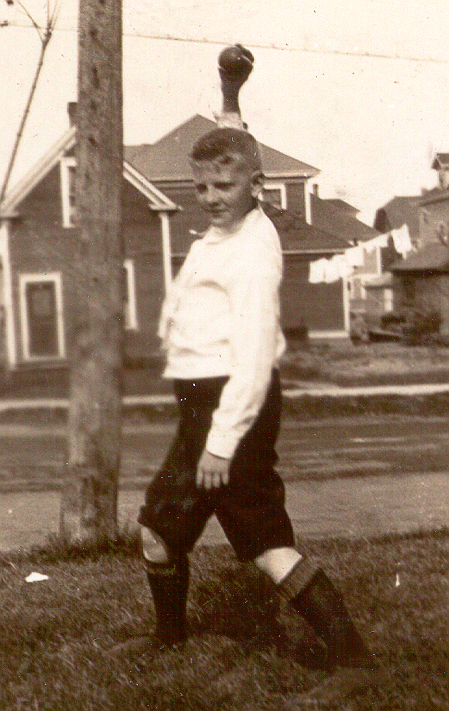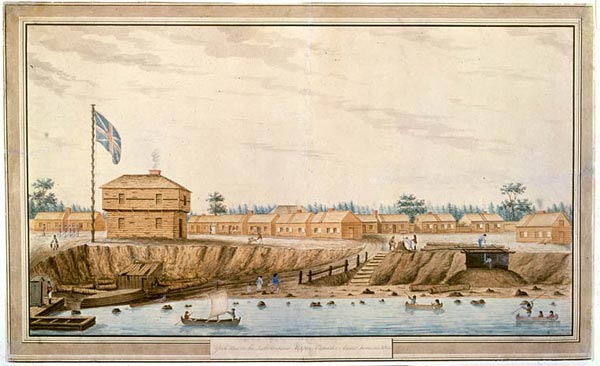Frye in the front yard of 24 Pine Street, ca. 1922
I was well prepared to enjoy myself here in Moncton. But I am enjoying myself much more than I expected. It begins, first, with the extraordinary people who run the Frye Festival, many more than I can name. But the people I’ve seen up close doing their jobs so remarkably well include Festival Chair Dawn Arnold, as well as the inexhaustibly resourceful Danielle LeBlanc, Roxanne Richard, and Ed Lemond. It’s a pleasure to thank them publicly for the tireless work they do, most of it behind the scenes.
Yesterday, Ed Lemond, Co-chair of Program Development, took it upon himself to give me a tour after the morning’s official opening ceremony at City Hall (which, incidentally, was once the site of the Public Library whose contents Frye would have spent many hours exploring). First we toured Frye’s childhood neighborhood, which includes the site of Queen Victoria School, the elementary school he attended; it remains an elementary school, although the original building is of course long gone. Just across the road from the school is Victoria Park, where Frye no doubt spent much time while growing up. And just around the corner from Victoria Park is his home at 24 Pine Street.
Victoria School and Victoria Park are both situated on Park Street, from which Pine Street runs. The block Frye’s home faces is interesting. The first thing you notice is that it is only half the width of an ordinary residential block, with just a single row of large houses overlooking Victoria Park; the backs of those houses, as a result, overlook Pine Street. This means that only the back of these upscale homes face Frye’s house, as well as those of his neighbors who lived on the poorer side of Pine Street. Ed says the reason is that the people who lived on Pine Street and served those large homes in the 19th century were intended to have access to them by the back entrances.
The houses that have occupied Pine Street and the neighborhood for a century and more are still there, but many of course have been refurbished, and, in some cases, siding put over their wooden exteriors. Even so, the sense of Frye’s childhood neighborhood is remarkably intact. 24 Pine Street is still a duplex combining numbers 24 and 26. Moreover, 24 Pine itself remains comprised of two separate dwellings, one downstairs and one upstairs, the upstairs apartment being where the Frye family lived.
We then went off to Frye’s old school, Aberdeen High, which is still standing. It does not take much of an imaginative leap to imagine it as it was then. Frye spoke of his childhood education with mixed feelings at best; the pedagogy back then was pretty stern and unrelentingly authoritarian — corporal punishment remains part of the living memory of those old enough to have endured it. (I stood in what was once the principle’s office where, I was told, former students still shudder at the memory of being struck across the palm with a ruler.)
However, that sturdy monument of a building is now the Aberdeen Arts Centre, the home of the Acadian arts community in New Brunswick. It is still under construction, and everything is being opened up into magnificent galleries and working spaces for artists, writers and dancers. On the third floor a large performance space is just beginning to take shape. One of the best things about antique schools is their wide, high windows. The entire place is flooded with sunlight. I have no doubt Frye would have been delighted to see what had become of his old high school. Like the Frye Festival, it is dedicated to the arts first and foremost.
Despite all of these extensive renovations, one part of the school remains unchanged since Frye’s day: three flights of stairs situated at either end of the long hallways. Those wooden steps are gently worn by a century of foot traffic, the permanent shine on the banisters burnished by countless hands. The young Frye was really here, and this is what he saw. It’s difficult not to be moved by that.
More coming, including photographs.


